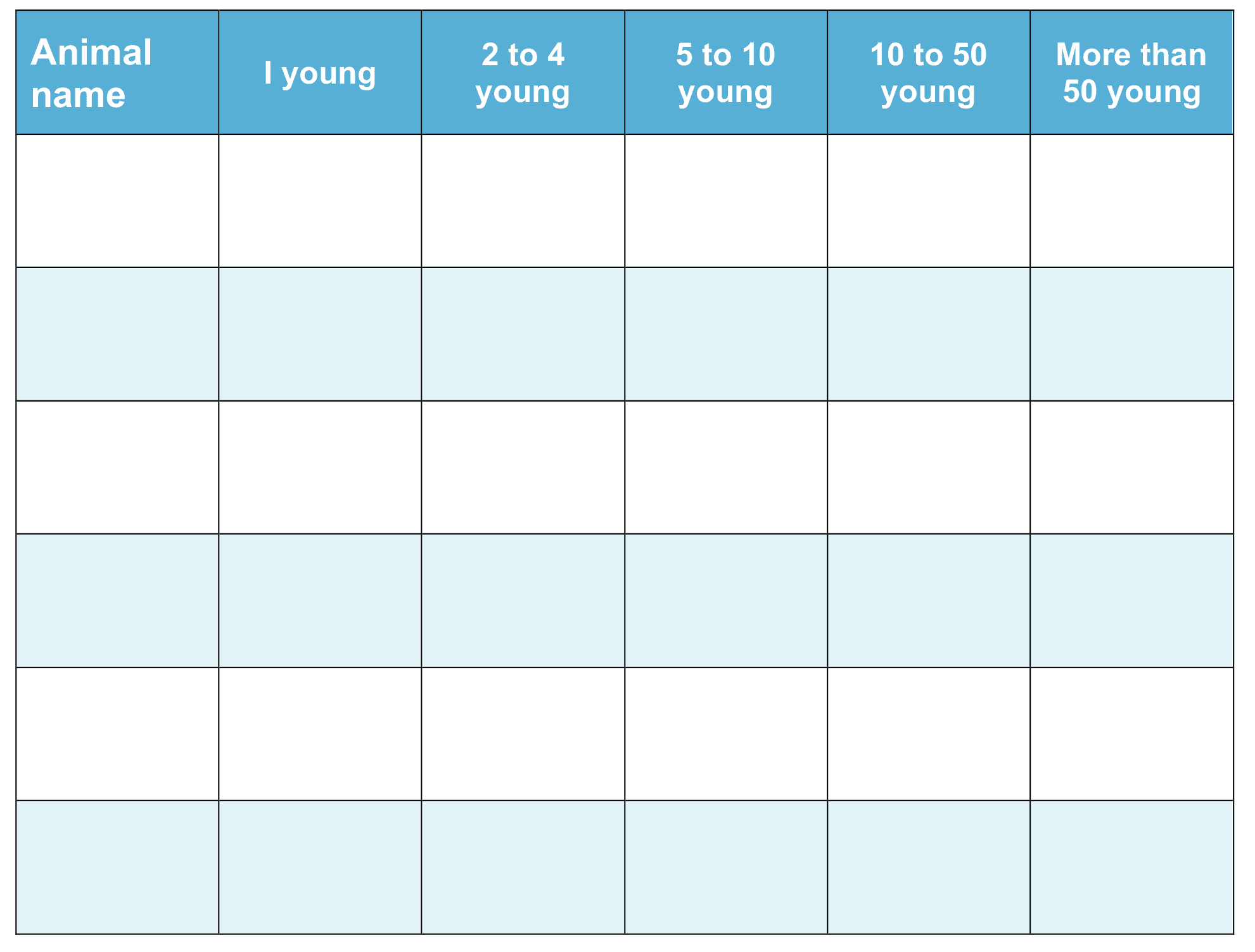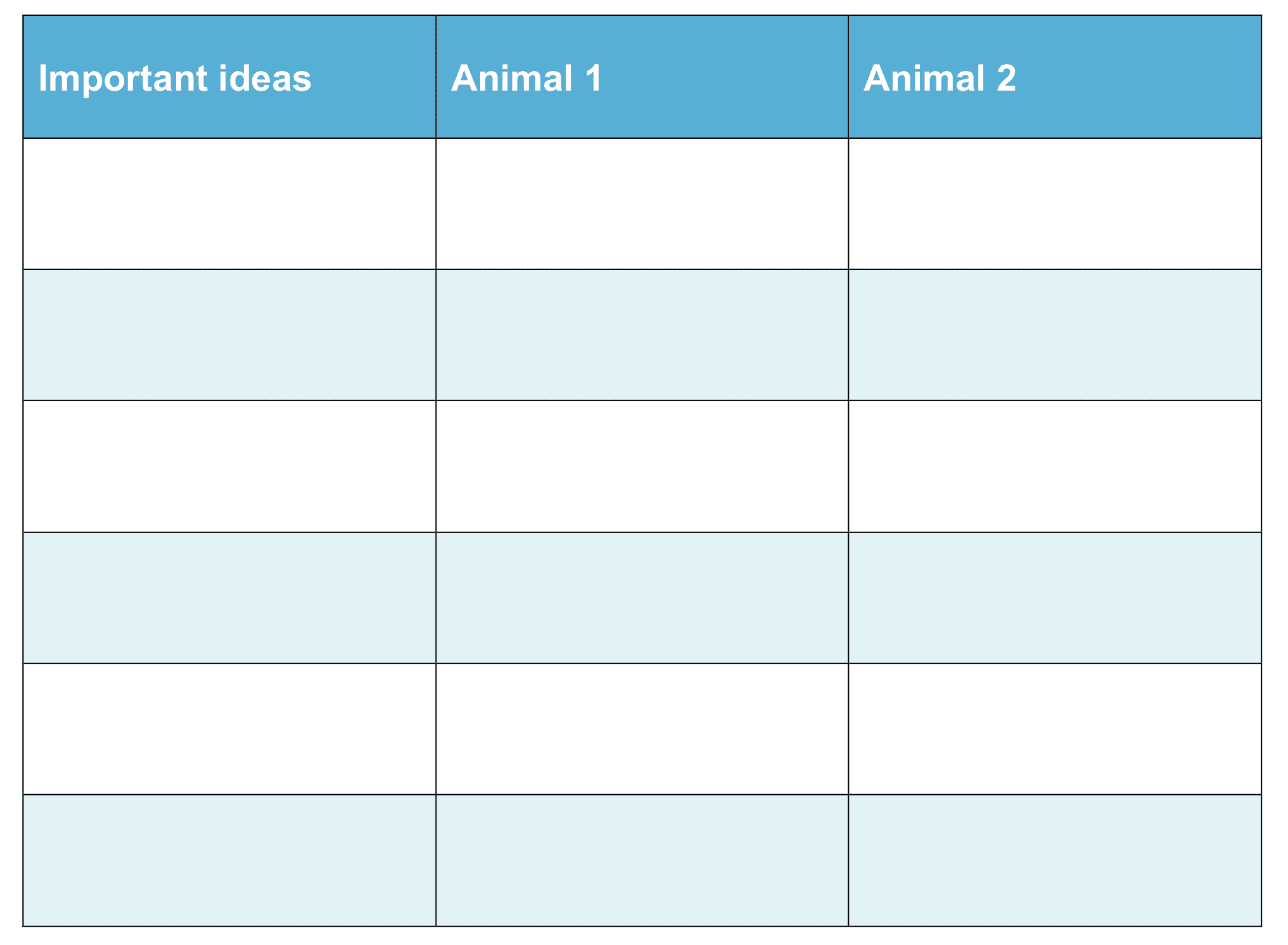Information for Teachers
Curriculum links
This investigation is linked to the following Grade 3 Next Generation Science Standards.
LS1.B: Growth and development of organisms
Reproduction is essential to the continued existence of every kind of organism. Plants and animals have unique and diverse life cycles. (3-LS1-1)
LS2.C: Ecosystem dynamics, functioning, and resilience
When the environment changes in ways that affect a place’s physical characteristics, temperature, or availability of resources, some organisms survive and reproduce, others move to new locations, yet others move into the transformed environment, and some die. (secondary to 3-LS4-4)
LS2.D: Social interactions and group behaviors
Being part of a group helps animals obtain food, defend themselves, and cope with changes. Groups may serve different functions and vary dramatically in size. (3-LS2-1)
LS3.A: Inheritance of traits
Many characteristics of organisms are inherited from their parents. (3-LS3-1)
Other characteristics result from individuals’ interactions with the environment, which can range from diet to learning. Many characteristics involve both inheritance and environment. (3-LS3-2)
LS3.B: Variation of traits
Different organisms vary in how they look and function because they have different inherited information. (3-LS3-1)
The environment also affects the traits that an organism develops. (3-LS3-2)
LS4.A: Evidence of common ancestry and diversity
Some kinds of plants and animals that once lived on Earth are no longer found anywhere. (3-LS4-1)
Fossils provide evidence about the types of organisms that lived long ago and also about the nature of their environments. (3-LS4-1)
LS4.B: Natural selection
Sometimes the differences in characteristics between individuals of the same species provide advantages in surviving, finding mates, and reproducing. (3-LS4-2)
LS4.C: Adaptation
For any particular environment, some kinds of organisms survive well, some survive less well, and some cannot survive at all. (3-LS4)
How to search the internet
1 Keep your request short
Fewer words will give a more accurate search.
2 Choose exactly what you want
For example: Arctic Circle Climate
3 Use quotes
Double quotes around a set of words tell the search engine to consider those exact words in that exact order without any change. For example: “Arctic Circle Climate”
4 Use the plus sign (+)
If you add a plus sign (+) between words, the internet will search for all the words. For example: migrate+birds+whales+mammal
5 Use the minus sign (–) to say what you don’t want
Use a minus sign (–) to show words you do not want to appear in your results. For example: if you search for burrowing animals and do not want mammals in your search, –mammals will exclude mammals. Note that you need to put a space before the minus sign for the word to be excluded.
6 Be very clear about what you don’t want
Part 1
Ask questions and define problems
After reading Animal Lifetimes, you will know more about the amazing differences in the lifetimes of some animals.
List your questions
- Compare your list with questions that others have.
- Choose a question you would like to investigate.
- You can work alone, with a partner, or in a small group.
You may want to choose one or more of these questions to investigate
Q1. Find out about some animals that are able to look after themselves from the time of their birth and other animals that need a great deal of help from parents.
Q2. How are the life cycles of three very different animals similar or different?
Q3. Compare animals have the longest lives with those that live for the shortest times.
Go to Part 2 Investigate →Part 2
Investigate
Helpful websites
You can use words like these in your searches:
long+animal+lifetimes
short+animal+lifetimes
animal+parents
animal+lifecycles
Go to Part 3 Record data →Part 3
Record data
Find a way of recording your information that will allow you to see any patterns in the data.
Data Chart for How many young do they have?
(Download and change to suit your information)
 Download Chart
Download Chart
Go to Part 4 Organize, analyze, and interpret data →
Part 4
Organize, analyze, and interpret data
1. Look over the information you have gathered and the patterns you have found.
Does any of this information surprise you?
2. Search for other patterns.
What do the lifecycles of animals that have short lifetimes have in common?
What do the lifecycles of animals that have long lifetimes have in common?
3. Make notes about what you find.
Go to Part 5 Present and share →Part 5
Present and share
Look over all of the information that you have gathered in your investigation.
What are the most important ideas about animal lifetimes?
Make a chart showing the most important ideas.
 Download Chart
Download Chart
← Return to menu